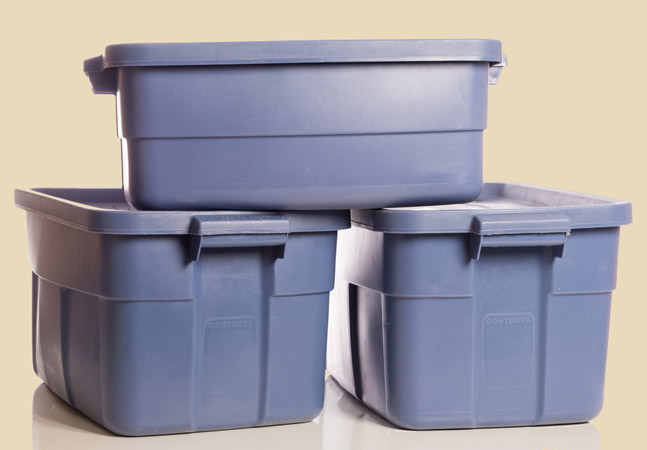Random Access
Storage Innovations Bring Unparalleled Capacity Opportunities
Wondering how manufacturers can continue to release larger storage drives every year? Here's some of the tech that makes it possible.
- By Scott D. Lowe
- 01/29/2014

I jumped into my first full-time job in the IT field back in early 1994 when storage costs were pretty astronomical -- close to $1,000 per GB. Today, hard-drive storage costs are commonly lower than 4 cents per GB. Of course, the actual price you pay for storage really depends on a lot of factors, including the kind of disk you buy (solid state vs. hard disk drive), the disk quality and intended use (consumer vs. enterprise), and some of the overall disk characteristics, such as its rotational speed. However, the cost per gigabyte also depends on the total capacity of the disk. As disk capacity gets larger, the cost per gigabyte often comes down thanks to economies of scale. After all, a 512 MB disk still has the same housing as a 4 TB disk, so there is a sunk cost that goes into every hard drive that has to be overcome -- the form factor. It's the ability for manufacturers to be able to continually cram more and more data into this form factor that helps to bring down the per-GB cost of hard drives.
In the past decade or so, there have been some tremendous advances in storage engineering and technology that have allowed storage manufacturers to release larger and larger capacity hard drives year after year.
'Pixie Dust'
The ability for disks to store more and more data is a direct result of major breakthroughs in chemistry and physics that enable manufacturers to increase what is known areal density or bit density. This is a measurement of the number of gigabits per square in (Gb/in^2) that can be stored on a particular medium. There has been continual increase in this figure over the years, but one of the biggest physical breakthroughs came when "pixie dust" hit the market. This pixie dust is basically a microscopically thin layer of a material known as ruthenium, which is placed between two magnetic layers. This achievement alone resulted in hard-drive manufacturers gaining the ability to quadruple the areal density of magnetic storage. Later on, this technology was coupled with a smaller femto slider -- "
the tiny flying wing supporting the read/write head above the surface of the disk" -- which further increased the areal density potential of magnetic media.
So, in the same amount of magnetic platter real estate, manufacturers could now place orders of more data than had been possible before. As a result, in the same package -- the 3.5" hard disk package -- customers could get hard drives that had much more capacity while the real cost stayed about the same, meaning that customers paid less on a $/GB basis.
Perpendicular Storage
Think of a unit of storage on a disk as a Lego block. Way back before 2006, hard disks laid individual data elements down just like you would build a wall with Legos. Bricks were stacked lengthwise atop one another. Of course, with a disk, the bits aren't completely on top of one another, but the tracks are laid down as a length of Lego bricks.
Perpendicular storage improves overall capacity density of hard drives by flipping these bits on their ends rather than on their bottoms. If you have a Lego brick and you experiment with sitting it upright on its small side, you will see that is ends up using much less physical space on your desk. The same is true for data bits. Now imagine doing this with billions of bits of data on your disks and it becomes more obvious how this technology can improve the overall areal density of magnetic storage.
Shingled Hard Drives
When it comes to continuing to cram more data to disks, physics can get in the way. As individual elements get smaller and as they get placed closer together, data integrity begins to be risked as the potential for flipped bits increases. This means that, as manufacturers try to go smaller, things can get tough. But, smaller is how drive sizes continue to increase.
Rather than trying to make tracks on the disk super thin, which has its own physics-based challenges, singled hard drives take a different approach and write wider tracks, which are then overlapped with one another, obviating the need for smaller write heads while at the same time doubling areal data density to 3 trillion bits/sq. in.
Helium-Filled Hard Drives
Most recently, hard drive manufacturers have turned to helium to help continue to improve storage economics. Until recently, hard drives all had regular, everyday air inside the enclosure. Today, some hard drives are actually filled with helium, which is much lighter than air. As a result, as the disk spins and the heads are dragged through the enclosure, there is much less drag, which can mean better performance.
However, it also means that manufacturers have begun to release drives with seven platters rather than five. As a result of having the ability to add almost 50 percent more platters, manufacturers are hard at work selling drives that sport a whopping 6 TB of capacity.
About the Author
Scott D. Lowe is the founder and managing consultant of The 1610 Group, a strategic and tactical IT consulting firm based in the Midwest. Scott has been in the IT field for close to 20 years and spent 10 of those years in filling the CIO role for various organizations. He's also either authored or co-authored four books and is the creator of 10 video training courses for TrainSignal.